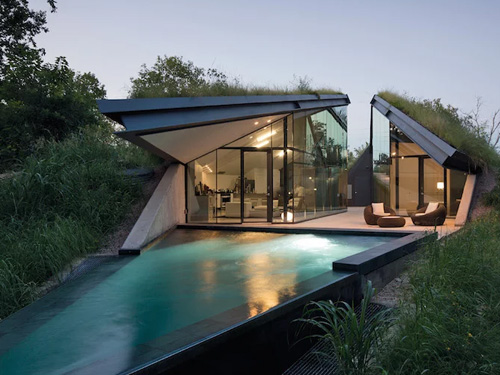PERIMETER BLOG
LATEST NEWS & INTERESTING FACTSThis will sound condescending, but I don’t have any real pleasant memories of spending time in buildings constructed on the foundations of sustainable development.
See? Condescending. It’s true, though. I remember growing up in a mostly rural/suburban area comprised of structures built in the impatient reality of the 1980’s. Get the walls up quick, get people to work quicker; that was the motto back then.
Well, with the economy smashing against the rocks on a daily basis, these days it’s more important to build smart instead of building fast. We want our architecture to last beyond the next generation.
One of the best ways to do that, from an aesthetic perspective?
Build sustainably.
And to encourage sustainable building practices, we need to pay attention to existing structures built with these values in mind.
Here’s four ways to know you’re strolling through a sustainably constructed building.
1. Organic Materials
Plastic used in construction is a fad that’s fortunately on its way out. If you’re in a sustainable building, chances are you’re surrounded by a lot of wood, glass, or concrete. Buildings that use sustainable materials might take a little longer to build or cost a bit more, but wood and concrete are natural materials that will last a long time before they require maintenance.
2. Natural Light
Sustainable buildings conserve energy wherever possible. Know the feeling of working in a dark, isolated building with no natural light? You get tired easier, your work suffers and it’s simply a gloomy, unfulfilling experience.
Open the walls up to natural light from outside, however, and it’s like a brand new career!
3. How’s the Food Dealt With?
A big clue you’re in a building that was built with sustainable construction methods is how the food is prepared and disposed. Buildings with easily accessed composting and recycling stations are often simply following the trend started when the building was first built.
However, it’s a lot easier to implement food disposal to an outdated building then the other way around; adding sustainable materials and high efficiency features to a recycle-bin friendly cafeteria in the middle of a field.
4. The Atmosphere
“As a society, we can create a more environmentally responsible culture without explicitly telling people to change their behaviour.”
That’s UBC’s Salina Marshall in response to research that sustainable behaviour is often subconscious. For example, Marshall notes, when you’re in a library, quiet, peaceful behaviour is encouraged naturally. Well, the same concept applies for sustainably-built buildings; when you’re surrounded by natural light, eco-friendly materials and composting stations, you’re naturally encouraged to operate by those tenets.
“Most students didn’t even know this was a super-green building,” Kingstone says, “yet when they were in the building they behaved more sustainably.”
– Alan Kingstone, UBC Department of Psychology
Recycling becomes subconscious. Cleaning up after yourself isn’t questioned. Clean, refreshing structures trigger our appreciation for fresh air and interesting architecture and influence us to make healthy choices that have a positive impact on everyone around us.
In short, sustainability is contagious.
Don’t you have it yet?

